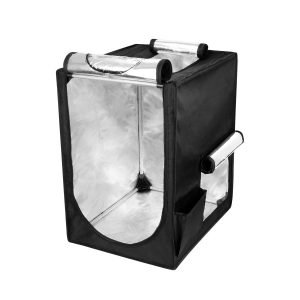Description
The latest addition to the Arduino family is here! The Arduino Leonardo is a microcontroller board based on the exciting USB-enabled ATmega32u4 (datasheet). This chip has about the same amount of flash, RAM, and capability as the ATmega328 found in the UNO. It has 20 digital input/output pins (of which 7 can be used as PWM outputs and 12 as analog inputs), a 16 MHz crystal oscillator, a micro USB connection, a spot for a 2.1mm power jack, an ICSP header breakout, and a reset button. It contains everything needed to support the microcontroller; simply connect it to a computer with a USB cable to get started.
This version of the Leonardo does not come with any headers attached for an ultra-thin, light-weight Arduino!
The Leonardo differs from all preceding boards in that the ATmega32u4 has built-in USB communication, eliminating the need for a secondary chip (such as an FTDI friend, FTDI cable or the USB/Serial converter on the UNO). On one hand this means that sketches on the Leo are a little bigger because it’s also handling USB interaction. On the other hand, it allows the Leonardo to appear to a connected computer as a mouse and/or keyboard, in addition to a virtual (CDC) serial / COM port. It also has other implications for the behavior of the board; these are detailed on the getting started.
The latest addition to the Arduino family is here! The Arduino Leonardo is a microcontroller board based on the exciting USB-enabled ATmega32u4 (datasheet). This chip has about the same amount of flash, RAM, and capability as the ATmega328 found in the UNO. It has 20 digital input/output pins (of which 7 can be used as PWM outputs and 12 as analog inputs), a 16 MHz crystal oscillator, a micro USB connection, a spot for a 2.1mm power jack, an ICSP header breakout, and a reset button. It contains everything needed to support the microcontroller; simply connect it to a computer with a USB cable to get started.
This version of the Leonardo does not come with any headers attached for an ultra-thin, light-weight Arduino!
The Leonardo differs from all preceding boards in that the ATmega32u4 has built-in USB communication, eliminating the need for a secondary chip (such as an FTDI friend, FTDI cable or the USB/Serial converter on the UNO). On one hand this means that sketches on the Leo are a little bigger because it’s also handling USB interaction. On the other hand, it allows the Leonardo to appear to a connected computer as a mouse and/or keyboard, in addition to a virtual (CDC) serial / COM port. It also has other implications for the behavior of the board; these are detailed on the getting started page.
This board is only supported in the latest Arduino IDE 1.0.1 so you will also need to update the IDE.
Features and Specifications:
ATmega32U4 Microcontroller
Clock frequency: 16MHz
Flash memory: 32KB
SRAM: 2.5KB
EEPROM: 1KB
Input Voltage: 7-12V
20 Digital I/O Pins
7 PWM Channels
12 ADCs
16MHz Clock Speed
32 KB Flash Memory
micro USB connection
Useful Links:
Getting Started with Arduino
Arduino Software (IDE)
Package Includes:
1 x Arduino Leonardo without Headers
page.
This board is only supported in the latest Arduino IDE 1.0.1 so you will also need to update the IDE.
- ATmega32U4 Microcontroller
- Clock frequency: 16MHz
- Flash memory: 32KB
- SRAM: 2.5KB
- EEPROM: 1KB
- Input Voltage: 7-12V
- 20 Digital I/O Pins
- 7 PWM Channels
- 12 ADCs
- 16MHz Clock Speed
- 32 KB Flash Memory
- micro USB connection
Useful Links:
- Getting Started with Arduino
- Arduino Software (IDE)
Package Includes:
1 x Arduino Leonardo without Headers







Reviews
There are no reviews yet.